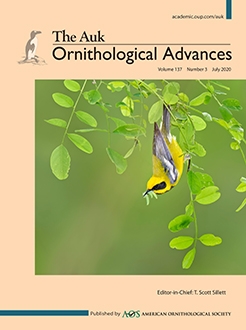Using the patterns of fault bars in their primaries, we studied the mode of primary replacement in non-molting Lesser Sandhill Cranes (Antigone c. canadensis) salvaged from hunters in southwestern Saskatchewan. About 80% of their primaries are used for 2 yr and 20% for 3 yr. Primaries are replaced during the breeding season and are lost in synchronous blocks representing about half the primaries, suggesting that most adults probably can fly weakly during flight feather replacement. Cranes are large, aggressive birds, and this interesting, and undescribed mode of flight feather replacement seems adapted to the ability of adult cranes to defend their precocial chicks from predators. Strikingly, juvenile Sandhill Cranes showed no fault marks in their primaries, suggesting that their parents' ability to protect them shields them from the fright of predator attacks, which, in most birds, causes fault bars to be more prevalent and strongly expressed in juveniles than adults. Adults show interesting variation in the number of primaries replaced annually, which seems likely related to whether or not they are caring for chicks. Further, single primaries may or may not be replaced preferentially, suggesting sensitivity to feather function. Evaluating these observations must await field studies of molting adults.
LAY SUMMARY
Lesser Sandhill Cranes that breed in the far north replace about half of their primaries annually in a synchronous molt
This resolves 2 time period conflicts: the exponential increase with body size in the time required to molt, and the need to overlap primary molt with parental care.
Using fault marks, feather growth rates, and feather wear, we deciphered this previously unknown mode of primary replacement from a sample of non-molting birds.
Within adjacent blocks of same-age primaries, distance differences from feather tip to marker faults showed that feather pairs were usually lost within 24 hr of each other.
Cranes are big, tough birds, and synchronous loss of about half of the primaries helps parents defend young from formidable predators.
Synchronous replacement also reduces molt duration to the time required to grow the longest renewed primary, squeezing primary renewal of this far-northern breeder into the brief time window before their long southward migration.






